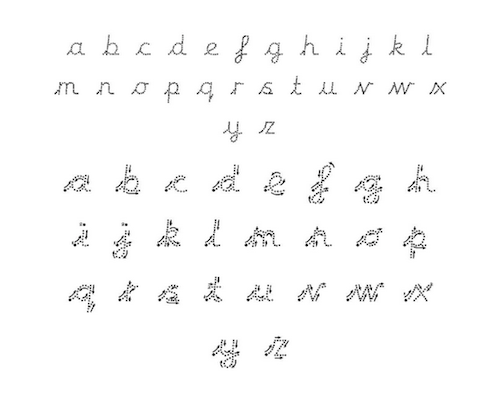
Image Credit: Birdsedge First School
Remember these things? It's hard to believe that kids are still learning to shape their letters according to handwriting diagrams like this one. In the first world where type is the dominant mode of textual presentation, one has to wonder how often kids will encounter a squiggly 'f' as it's drawn above or a lower case 'k' that looks like a capital R?
The chart looks to us like an anachronism, especially next the digital text of this blog post. We're prompted to ask whether kids should be taught to write a script that is rapidly fading from the textual universe? Is handwriting a skill that is worth acquiring in an era when written communication mainly occurs through digital media, without the assistance of pen or paper?
Recent comments
2 years 29 weeks ago
2 years 44 weeks ago
2 years 44 weeks ago
2 years 50 weeks ago
3 years 4 weeks ago
3 years 4 weeks ago
3 years 4 weeks ago
3 years 6 weeks ago
3 years 6 weeks ago
3 years 6 weeks ago